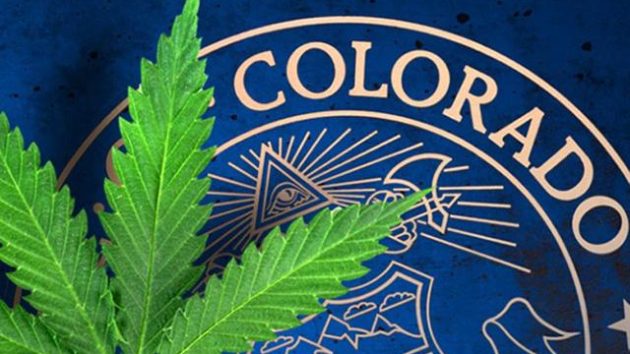For every dollar gained in tax revenue, Colorado taxpayers paid $4.50 to mitigate the effects of marijuana legalization

A comprehensive new report by the Centennial Institute analyzes what marijuana legalization costs Colorado taxpayers. A few highlights:
- The highest costs are connected to marijuana-related ER admissions, hospitalizations, and school dropouts.
- There is a connection between marijuana use and the use of alcohol and other drugs.
- Calls to Poison Control increased dramatically after legalization for medical use in 2000 and recreational use in 2014.
- Adult marijuana users generally have lower educational attainment than nonusers.
- Some 69 percent of marijuana users say they have driven at least once under the influence of marijuana.
- Some 27 percent do so on a daily basis.
- In 2016, the marijuana industry used enough electricity to power 32,355 homes.
- That year, the industry was responsible for 393,053 pounds of CO2 emissions.
Read full Centennial Institute report here.
RELATED ARTICLE: Denver City Council Thinks Helping Heroin Addicts Shoot Up Will Stop Them Shooting Up
 Greater risk for frequent marijuana use and problems among young adult marijuana users with a medical marijuana card
Greater risk for frequent marijuana use and problems among young adult marijuana users with a medical marijuana card
With funding from the National Institute on Alcohol Abuse and Alcoholism, researchers conducted a multi-year study of southern California children from middle school through high school.
At age 19, 28 percent (188) of 671 young adult marijuana users possessed a medical marijuana card.
- Card holders showed steeper increases in frequent marijuana use (20 to 30 days in the past month) from ages 13 to 19 than those who did not have a card.
- They also reported more problems in young adulthood than non-card holders, including negative consequences, selling marijuana/hashish, and driving under the influence of marijuana.
- In addition, they were more likely to have tried to cut down or quit using marijuana in the last three months than those who did not possess a medical marijuana card.
The researchers conclude that given expanding state legalization of marijuana for medical use, this issue warrants further attention.
Read Science Direct summary of Drug and Alcohol Dependence journal article here.
FullMeasure takes a look at Colorado’s marijuana legalization
This 8-minute video and transcript presents a picture of the results of marijuana legalization in Colorado, the first state to legalize marijuana for recreational use. We hear a lot about the up side of legalization, not so much about the down side. This reporting team set out to examine both.
The biggest surprise has been the expansion – rather than the demise promised by legalization advocates – of the black market. Cartels rent homes in upscale neighborhoods, rip up carpeting, tear down walls, and push up wooden floors to turn them into grow houses, totally destroying half-million-dollar homes in the process. And those are rented homes.
There has also been a spike in crime. In 2016, Colorado’s increase in its crime rate was eleven times more than the average 30 biggest US cities. Homicides are up by almost 10 percent.
Read and see FullMeasure story here.
Cannabis use and suicide attempts among 86,254 adolescents aged 12-15 years from 21 low- and middle-income countries.
Researchers analyzed data from the Global school-based Student Health Survey taken by 86,254 adolescents from 21 countries to assess whether suicide attempts in the past year might be associated with lifetime and past-month marijuana use.
Overall prevalence of past-month marijuana use was 2.8 percent (varying from 0.5 percent in Laos to 37.6 percent in Samoa).
Overall prevalence of lifetime marijuana use was 3.9 percent, while overall prevalence of suicide attempts was 10.5 percent.
The researchers found that past-month marijuana use was significantly associated with suicide attempts. Lifetime marijuana use was also independently associated with suicide attempts.
They call for the causality of this association to be confirmed or refuted in prospective studies to further inform policies for suicide prevention.
Read European Psychiatry abstract here.
Mount Sinai researchers conduct study of second-hand marijuana smoke in children
Researchers found that nearly half of children whose parents smoked marijuana showed evidence of second-hand smoke exposure.
Their study was a secondary analysis of data and samples collected in a larger study evaluating the effectiveness of a tobacco cessation program for parents whose children were hospitalized in Colorado. Some of the parents also reported that they smoked marijuana.
The Centers for Disease Control and Prevention tested urinary biomarkers in the collected samples. They found that 46 percent of the children had detectable levels of a THC metabolite; 11 percent had detectable levels of THC itself.
“There are worrisome results, suggesting nearly half of the children of parents who smoke marijuana are getting exposed and 11 percent are exposed to a much greater degree,” says lead researcher Karen Wilson, MD, MPH of the Icahn School of Medicine at Mount Sinai.
The parents of one-third of the marijuana-exposed children said they had stepped outside to smoke pot, but the children still were exposed, suggesting that their exposure may have come from third-hand smoke. Third-hand smoke is smoke that lingers in hair, clothes, even on skin and results in biological exposure that can be detected.
Read Mount Sinai press release of Pediatrics article here.






Made up Reefer Madness nonsense
Ben,
Thanks for reading and commenting.
Do you have other evidence that this is not so from a reliable scientific study? If so please present it.